(466 products available)

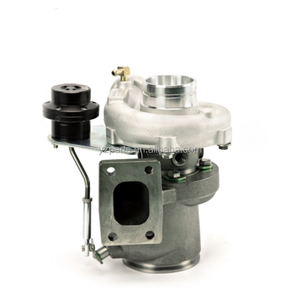











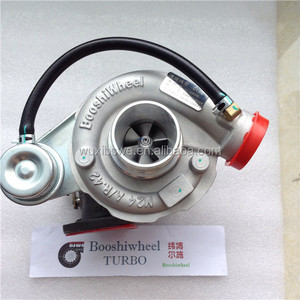










































































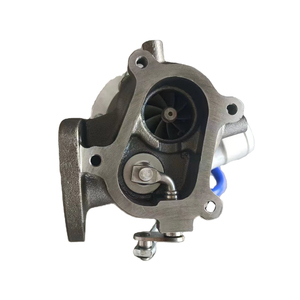

















































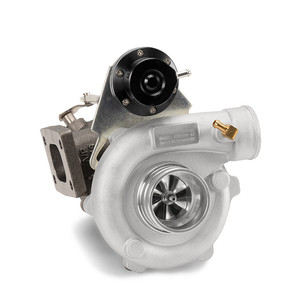


























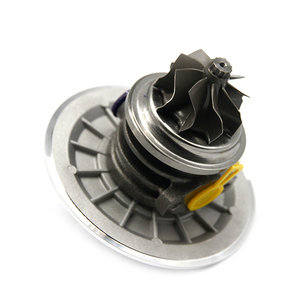








GT22 turbochargers are high-performance turbochargers commonly used in racing and performance applications. They are known for their ability to generate significant boost levels and support high airflow, making them suitable for tuning and performance upgrades. GT22 turbos are designed to improve engine efficiency, increase horsepower, and provide a more exhilarating driving experience.
Single Turbo GT22:
Single Turbo GT22 setups utilize one GT22 turbocharger. This is the most common and straightforward kind of turbocharging system. The solitary turbo is connected to the engine's exhaust system, where it collects exhaust fumes to drive its turbine. Meanwhile, the turbo's compressor draws in ambient air and pushes it into the engine's intake system. This arrangement enhances airflow, leading to increased engine power. Single Turbo GT22 setups are generally easier to install and maintain, making them a popular choice among car enthusiasts seeking a balance between performance and simplicity.
Twin-Turbo GT22:
In a Twin Turbo GT22 setup, two GT22 turbochargers are employed. There are two primary configurations for this kind of system: parallel and sequential. In a parallel arrangement, each turbo is connected to its own bank of cylinders in a V-style engine, enabling even turbocharging across all cylinders. On the other hand, a sequential arrangement involves one turbo for low-end RPMs and another for high-end RPMs, optimizing power delivery across the entire engine speed range. Twin Turbo GT22 setups provide a more significant power increase compared to single turbochargers. The twin-turbo configuration allows for quicker spool times, reduced turbo lag, and improved overall efficiency, resulting in more immediate and sustained power gains.
Ultimately, the choice between Single and Twin Turbo GT22 configurations depends on the desired performance characteristics, ease of installation, and maintenance preferences.
The specification of any turbocharged engine is vital for understanding its capabilities and limitations. The specification list for a GT22 turbo is as follows:
Compressor Wheel
The compressor wheel is an integral part of the turbocharger. It is responsible for drawing in air and compressing it before channeling it into the engine. The GT22 turbo has a compressor wheel that measures between 50 and 60 mm in diameter. The compressor wheel also has a housing that measures between 0.3 and 0.5 liters. The housing is responsible for containing the compressed air and directing it into the engine.
Turbine Wheel
The turbine wheel is another vital component of the turbocharger. It is responsible for drawing in exhaust gases and spinning the turbine to generate the necessary boost. The GT22 turbine wheel measures between 48 and 58 mm in diameter. Additionally, the turbine wheel has a housing that measures between 0.5 and 0.7 liters.
Bearings
Bearings are critical components of any turbocharger as they allow for smooth rotation of the turbine and compressor wheels. The GT22 turbo comes with journal bearings, which provide a cost-effective and reliable solution for bearing needs. Additionally, the GT22 turbo comes with a bearing housing measuring 0.2 to 0.3 liters to accommodate the bearings and allow for oil flow.
Oil Supply and Return Lines
The GT22 turbo relies on oil for lubrication and cooling. As such, it has dedicated supply and return lines for oil flow. The oil supply line has a diameter of 4 to 6 mm and a length of 200 to 300 mm. Conversely, the oil return line has a diameter of 6 to 8 mm and a length of 300 to 400 mm.
Actuator
The actuator is responsible for controlling the position of the wastegate. The GT22 turbo comes with a pneumatic actuator that relies on pressure from the boost to control the wastegate. The actuator has a spring force of between 0.5 and 1.5 bar, allowing for precise wastegate control and boost pressure regulation.
Maintaining the GT22 turbocharger is essential for ensuring longevity and reliability. Here are some critical maintenance tips:
Regular Oil Changes
Oil changes are vital for the longevity of the GT22 turbo. Users should ensure they change the oil every 5,000 km or 3,000 miles. The oil change helps remove contaminants and debris, ensuring the oil flows freely through the turbo and minimizing wear and tear on the bearings.
Pre-lubrication and Post-lubrication
Users should always ensure they pre-lubricate the turbo before shutting down the engine. Pre-lubrication allows the oil to flow through the turbo and coat the bearings, ensuring they are well-lubricated and reducing dry start risks. Similarly, post-lubrication allows for oil flow through the turbo before shutting down the engine, further enhancing turbo longevity.
Avoid Overheating
The GT22 turbo is susceptible to overheating, which can lead to turbo failure. Users should avoid subjecting the turbo to excessive load or driving at high speeds for extended periods. Additionally, they should allow the turbo to cool down before shutting down the engine.
Inspect and Replace Hoses
The hoses connected to the GT22 turbo are vital for proper function. Users should regularly inspect the hoses for wear, cracks, or damage. Additionally, they should replace the hoses when necessary to avoid boost leaks and ensure the turbo functions optimally.
Regular Turbo Inspection
A regular turbo inspection is vital for the maintenance of the GT22 turbo. Users should regularly check the turbo for signs of wear, damage, or failure. Additionally, they should check the boost pressure and ensure it is within the manufacturer's specifications.
Choosing the right GT22 turbo for a specific vehicle can be a challenging task. Here are some important factors to consider when selecting the right GT22 turbo.
The first thing to consider is the GT22 turbo specs, which include the compressor wheel size, turbine wheel size, aspect ratios, and housing sizes. These specs will determine the turbo's performance characteristics and suitability for a given application. For example, a larger compressor wheel size might be beneficial for high RPM engines but could result in slower spool times for low RPM engines.
Understand the engine requirements by considering the engine displacement, configuration (inline, V, or boxer), and any modifications done to the engine (such as aftermarket air intakes, exhausts, or ECU tuning). Different engines will respond differently to turbocharging, so it's essential to select a turbo that matches the engine's characteristics.
Consider the vehicle requirements. For example, a sports car might benefit from a turbo that provides rapid acceleration, while a family sedan needs a more gradual power increase. Additionally, consider the vehicle's weight, gearing, and overall performance expectations.
Determine the power goals, which includes understanding the horsepower and torque targets. The GT22 turbos are designed to provide a specific power range, so selecting a turbo that meets or slightly exceeds the desired power level is important.
Choosing a GT22 turbo from a reputable manufacturer can ensure quality and reliability. Research and consider the experiences of other users with the same turbo in similar applications.
Evaluate the ease of installation and compatibility with the existing exhaust manifold, downpipe, intercooler piping, and oil and coolant supply/return lines. Some turbos may require additional modifications or aftermarket components to install properly.
Consider the GT22 turbo durability and warranty. Some turbos are built for long-lasting, reliable performance, while others may require more frequent maintenance or replacement. Also, consider the maintenance requirements of the turbo, such as oil changes, and whether it comes with a warranty.
Replacing the GT22 turbo is a straightforward process that can be accomplished in a few steps. One of the steps is to gather the necessary tools for the project. These tools include a socket set, wrenches, and a torque wrench, as well as parts like new oil feed and drain gaskets, turbocharger, and bolts. Following that, the old turbo is taken out. Disconnect all of the pipes and electrical connections after loosening the clamps. Then, remove the turbo bolts and slide the turbo out of the exhaust manifold.
After the old turbo has been removed, the next step is to install the new turbo. Make sure the new turbo is properly orientated to match the old one before setting it onto the manifold. Next, use new gaskets and torque bolts to secure the turbo to the manifold. After that, reconnect all pipes and electrical connections, ensuring they are secure and free of leaks. Refill the engine oil and coolant after worrying about the turbo and its connections. Restart the engine and check for leaks or unusual noises. Take the vehicle for a test drive to ensure proper turbo function and performance.
Q1: How long do GT22 turbos last?
A1: Generally, GT22 turbos can last for 100,000 miles or more. The lifespan of GT22 turbos can be affected by various factors, such as heat, oil contamination, and over-speeding.
Q2: Can GT22 turbos be upgraded?
A2: Yes, GT22 turbos can be upgraded. Upgrading the GT22 turbocharger can improve airflow and increase the power of the engine. Nonetheless, consult with the manufacturer or a professional mechanic to ensure the GT22 turbo is compatible with the engine.
Q3: What is the warranty period of GT22 turbos?
A3: The warranty period of GT22 turbos varies depending on the supplier. Normally, the warranty period ranges from 6 months to 18 months. Some suppliers also offer a quality guarantee for GT22 turbos within a specific period.